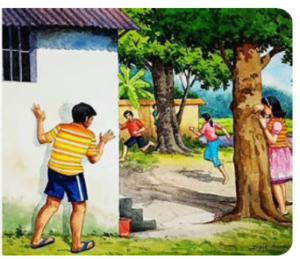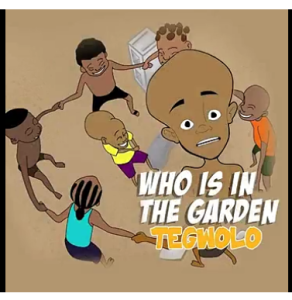Beyond the Digital Tide:
Nigeria and Africa Need to Revive Their Cultural Heritage
Before the widespread digitalization of Nigeria in the late 1990s,
the country was rich in cultural traditions that fostered a strong sense of community, character,
and genuine bonds among families and children.
However, with the rapid onset of digitalization,
many of these cultural practices have been lost, overshadowed by the pressure to adapt to a more digital lifestyle.
While embracing digitalization is essential for progress, it’s equally important to preserve our cultural heritage.
Digitalization drives innovation, but it has also significantly impacted our reality and personal and communal growth.
A stark illustration of this is the common scene of a family sitting together in the same room, yet each member is engrossed in their own digital world,
their faces glued to their phones and lacking meaningful communication and connection.
The good old Nigerian and African cultures that once brought people together are now urgently in need of revival.
In today’s digital age, many, especially the younger generation, have lost their sense of morals, belonging, and connectedness.
As a result, it’s essential to revisit and re-embrace these rich cultural practices.
Beyond the Digital Tide:
In this article, we’ll delve into two significant aspects of our African heritage that positively shaped us before the spread of digitalization:
Our Moonlight Tales and Our Beloved Games of the Past.
Let’s embark on a nostalgic journey together.
Our Moonlight Tales
Traditionally known as “Tales by Moonlight,” this storytelling practice was an integral part of African culture.
The stories served as a rite of passage, preparing young people for life’s challenges and imparting valuable lessons and morals.
African folktales often featured a diverse array of animals, which were anthropomorphized,
exhibiting human-like qualities such as speech, song, and traits like greed, jealousy, honesty, and more.
They are esteemed arts of eloquence and symbols of identity that stimulate listeners’ critical thinking,
encouraging them to look beyond the content and structure to decipher vital, subtly coded information.
This goes beyond the morals and entertainment value they impart.
According to Osedebamen Oamen, author of “African Moonlight Folktale,” FATHER’S MOONLIGHT FOLKTALE eBook : Oamen, Osedebamen: Amazon.co.uk: Kindle Store
“This noble art form should be sustained and studied for its cultural significance, extending beyond its moral and entertainment value,
both in Africa and globally, as a cherished segment of our cultural heritage.”
In today’s world, it’s a rare sight to see children gathered around to hear beautiful stories under the moonlight, learning valuable morals and life lessons.
This scarcity is having a profound impact on us daily.
Beyond imparting morals, this tradition fosters open communication, curiosity, and a healthy bond between adults and children.
During these night gatherings, children are encouraged to ask questions,
sparking meaningful interactions with adults who share their stories.
However, unfortunately, this rich cultural practice has been lost to digitalization in Africa,
and the effects are evident in the moral upbringing of children today.
Beyond the Digital Tide:
Our Beloved Games of the Past
Let’s embark on a nostalgic journey, revisiting the games we cherished as children and teenagers.
As we reminisce, I’m sure a smile will spread across your face, evoking memories of the “Good Old Days.”
The idea is to rediscover the beauty of what we’ve neglected – the simple joys and genuine bonds we formed as kids.
Let’s take a stroll down memory lane and revisit some of our favourite childhood games in Africa, the pre-digitalization era.
Hide and Seek (Boju Boju)

In this Nigerian version of the classic game, a group of children gather and choose one person to be the seeker.
The seeker closes their eyes and counts from 1 to 10.
After finishing the count, the seeker starts searching for the hidden players.
The first person found becomes the new seeker, tasked with finding the remaining hidden players.
Suwe
Suwe is a popular traditional game in Nigeria that brings children together.
The game begins with drawing a series of connected boxes on the ground.
Each player has their own stone and takes turns hopping through the boxes on one foot, carefully avoiding the lines.
If a player successfully navigates the boxes, they get to throw their stone.
The box where the stone lands becomes a restricted area for other players.
As the game progresses, the challenge grows, and players must adapt to avoid the forbidden boxes.
Tinko Tinko
Tinko Tinko is a popular game among girls and boys equally.
It is played among two partners or a group.
The game involves facing each other, clapping, and interchanging palms in a rhythmic pattern.
As players slam their partner’s hands, they sing the catchy theme song: “Tinko! Tinko!! Tinkoko Tinko!”
Beyond the Digital Tide:
Who Is In The Garden?

The game begins with children forming a large circle and chanting:
“Form a big circle, like a mother cooking pot!”
The leader then runs around the outside of the circle, singing:
“Who is in the garden?”
The group responds in unison:
“A little fine girl.”
The leader continues:
“Can I come and see her?”
The group replies:
“No, no, no, no!”
The leader then says:
“I beg my sister/brother, follow me”
And taps a player on the back.
That player must follow the leader, running around the circle.
The leader repeats the questions, and the game continues until only two players remain in the circle.
The player who wasn’t tapped must then chase and catch the other players.
A new round begins, with the chasing player becoming the new leader.
After Round One
In this lively game, players sing the catchy theme song:
“After round one original panadol extra, o tun gbe de”
Before placing their fingers on the table, each player chooses a number.
If their number appears on the table, they win!
The last player remaining must put their palms together, and the others would slap their hands.
Mineral Cork Ball
For many boys, this game was the ultimate alternative to traditional football.
A football pitch was meticulously drawn with chalk on a flat surface.
The goalposts were creatively fashioned from St. Louis sugar packets or big-note paper, while the “players” were actually corks from soda bottles.
The game unfolded like a typical football match, with two teams competing against each other.
Players took turns flicking the corks across the pitch, strategically manoeuvring them to score goals.
Tyre Race
This unique and thrilling game was a creative twist on traditional racing.
Players would find old tyres and, with a mighty slap from behind, push them forward and run alongside their tyres to reach the finish line.
Ten Ten
In this rhythmic game, girls stood facing each other, clapping their hands and lifting their legs in a synchronized pattern.
The objective was to mirror your partner’s movements, but with a twist: each player had to lift the opposite leg of their partner.
If a girl lifted the same leg as her partner, the other girl scored a point.
The game required focus, coordination, and quick thinking to outmanoeuvre your opponent.
Police and Thief
This action-packed game was inspired by the thrill of action movies.
Interestingly, most players wanted to be the thief, eager to evade capture, resulting in a higher number of “thieves” than “police.”
The police had to skillfully chase and apprehend the thieves, adding an exciting element of strategy and teamwork to the game.
Beyond the Digital Tide:
Skipping Rope

Skipping Rope was a beloved game common among girls.
What made it particularly exciting were the various styles and techniques players showcased while jumping rope.
Another thrilling aspect was the challenge of synchronizing jumps with a partner when two people skipped together.
The game fostered a sense of community, with girls eagerly lining up to take their turns or cheering on their friends as they skipped.
The atmosphere was electric, filled with laughter and encouragement.
If You Are Born In…
This engaging game thrilled children due to its personal and interactive nature. Players formed a large circle, clapping and singing in unison:
“If you are born in a particular month, stand up and dance.”
As each month was mentioned, from January to December, children born in that month would excitedly jump up and dance in the centre of the circle.
The game built anticipation and enthusiasm, as each child eagerly awaited the mention of their birth month and planned their special dance move.
Numerous other captivating games were an integral part of childhood experiences before the digitalization era.
These games brought immense joy and a sense of love, fostering inclusivity as no one was ever left behind, regardless of their background.
Unfortunately, these games have all but disappeared, eroded by the rise of digitalization.
This loss is profoundly reflected in the emotional struggles our children and teenagers face today.
In conclusion,
our nostalgic journey back to the good old days has highlighted some of the precious aspects of our cultural heritage that have been lost to digitalization.
We must not let these treasures slip away entirely.
As part of our communal identity, they deserve to be preserved and passed on to future generations.
Families and schools should incorporate these old but ever-green practices into their curricula and schedules,
fostering emotional and mental well-being in children and promoting stronger bonds.
Africa is richly blessed with a vibrant cultural heritage. Let us not be swept away by the digital tide,
neglecting the very blessings that make us who we are and what connects us in Love.
Also Read: Lies Christian Creatives Believe – Diademng
Beyond the Digital Tide:
















